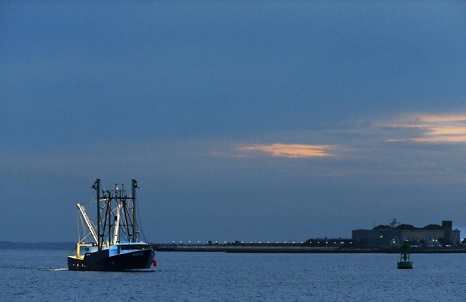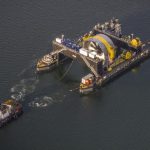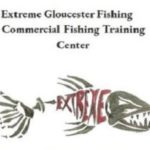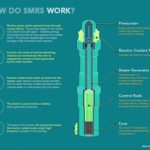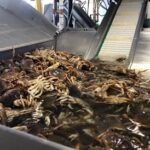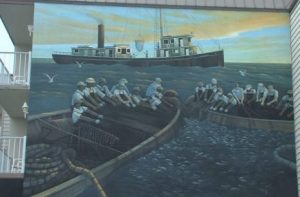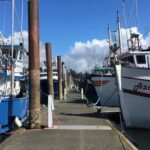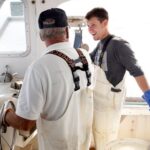Tag Archives: herring
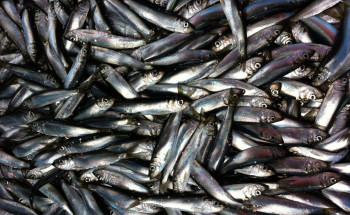
Drastic cut to herring quota puts Maine lobstermen over the bait barrel
The New England Fishery Management Council voted last month to set the 2019 herring quota at 3.2 million pounds – about 78 million pounds less than what the East Coast herring fleet is permitted to catch this year – to help the population recover from a record-low number of juvenile herring. To put the cut in context, that is about 2,000 tractor-trailer trucks of the industry’s favorite bait that won’t be showing up in New England lobster ports next year. >click to read<06:58
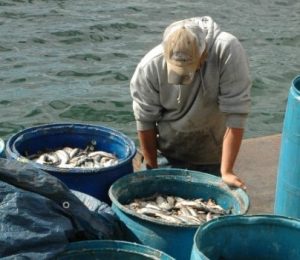
Lower herring quotas squeeze lobster trade
Last year, according to the Department of Marine Resources, lobster was Maine’s most valuable fishery with landings of 110,819,760 pounds — the sixth highest ever — worth some $450,799,283. Despite all the talk about high value species such as scallops and elvers, according to DMR herring were the state’s second most valuable commercial fishery in 2017. Herring boats like the Sunlight and the Starlight owned by the O’Hara Corp. in Rockland or the Portland-based trawler Providian landed some 66,453,073 pounds of herring worth about $17.9 million at a record price of 27 cents per pound. >click to read<10:20

Maine: Pending bait shortage poses another threat to New England lobster industry
Regulators want to cap this year’s herring landings at last year’s levels, or 50,000 metric tons, and slash next year’s quota of the most popular lobster bait from 110,000 to 30,000 metric tons. They want to do this to offset record low numbers of newborn herring that are entering the fishery to replace those that are caught, eaten by other predators or die from natural causes. The 2019 quota could fall even lower if regulators adopt a separate proposal to leave more herring in the sea to feed the fish, birds and marine mammals that eat them, including Gulf of Maine species such as cunner, cod, seals, whales, puffins and terns. The New England Fishery Management Council could decide the issue as early as September. Eco-based Management. >click to read<10:51
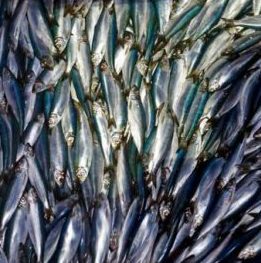
Mashpee Selectmen Push To Move Herring Trawlers Off The Coast
The New England Fishery Management Council, a federal entity, will host several public hearings to solicit comments on possible alternatives under consideration in an amendment to the Atlantic Herring Fishery Management Plan. More specifically, the council is seeking feedback from the public on which alternatives should be selected and why. One of those amendments includes forcing fishing vessels called midwater trawlers 12 miles off the Cape Cod shore.,,, But the operators of these midwater trawlers contest the proposed amendment,,, Mary Beth Tooley, a representative of O’Hara Corporation in Maine, says that about 80 percent of the Maine lobster fishery uses herring as bait. “That’s thousands of lobstermen that will be impacted,” >click to read<20:13
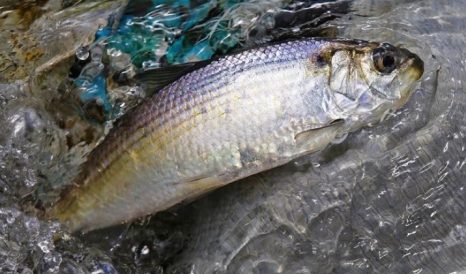
Massachusetts: Herring run in full swing along South Shore
Herring are filling local streams and rivers during their annual migration from the sea. Like salmon, herring live in salt water but travel to fresh water to spawn. In Pembroke, Herring Brook is full of fish fighting their way upstream to the top of a fish ladder that allows them to get around a dam at Glover Mill Pond. During the peak of the migration, it can see as many as 40,000 fish in one day. Video, photo’s >click to read<17:38
River herring return to Weymouth en masse – Thousands of herring were visible making their way towards the fish ladders in Jackson Square today. >click to read<22:51
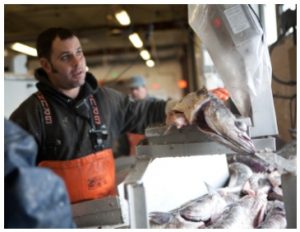
NEFMC Discusses Offshore Wind, Clam Dredge FW, Skates, Groundfish, Herring, IFM, and More at Mid-April Meeting
The New England Fishery Management Council met April 17-19 in Mystic, CT and discussed a wide range of issues that touched on everything from industry-funded monitoring to offshore wind, Clam Dredge Framework, Skate Wing Fishery, Northeast Multispecies -Groundfish, Atlantic Herring –River Herring/Shad, The New England Council paid tribute to two retiring Council members –Mark Alexander of Connecticut, left, who served on the Council for 10 years, and Mark Gibson of Rhode Island, >click to read<15:16

Biologists expect early 2018 Togiak herring run
This year, Togiak could see one of the earliest herring harvests ever recorded. “We’re going to fly our first survey on Friday. And then I expect we’ll be seeing herring by [April] 20th, if not sooner,” said Alaska Department of Fish and Game area biologist Tim Sands. That would be the Togiak fishery’s second-earliest start on record. The earliest recorded date a biomass was spotted in the district was April 14, 2016. But because of the unusual timing, fishing only began three days later. Herring spawn timing depends largely on water temperature >click to read<16:06
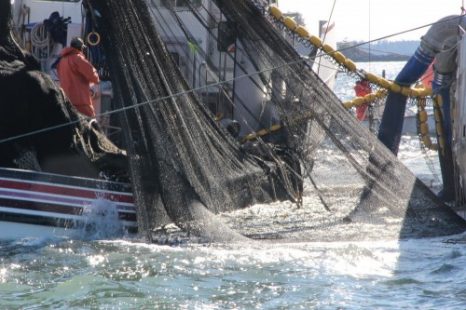
On 2-hour notice: Sitka herring fleet opts for ‘non-competitive’ fishery
The commercial sac roe herring fishery in Sitka Sound goes on two-hour notice tomorrow (Tuesday 3-20-18) at 7 a.m. That means the first opening could be as soon as two hours after that. But whenever fishing opens, it won’t be the full-throttle race to the grounds as in past years. Eric Coonradt, the state biologist who manages the fishery, following a pre-season meeting in Sitka Monday afternoon (3-19-18), confirmed that the permit holders have agreed to fish non-competitively, and to share the proceeds.>click to read<09:30
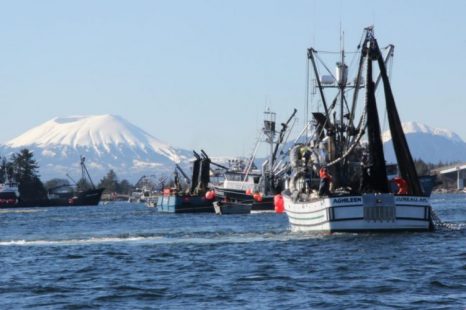
Commercial fleet highlights economic impact of Sitka Sound herring catch
Despite three days of impassioned testimony before the Board of Fisheries in January, not much has changed for the Sitka Sound sac roe herring fishery, which will ramp up in about a month. Local subsistence harvesters won an increase in the size of their exclusive use area, but failed to persuade the board to reduce the commercial catch. Fishermen and processors from Petersburg joined with other commercial interests to remind the board of the economic importance of the annual springtime export. >click to read< 14:53
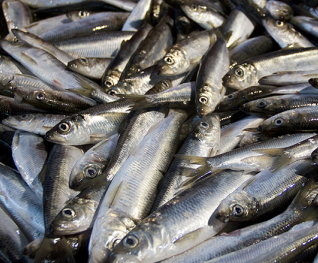
Industry tops subsistence on Board of Fisheries herring votes
In a morning of controversial deliberations at the Alaska Board of Fisheries meeting Tuesday, subsistence users weren’t successful in herring conservation measures to cut commercial fishing harvests. But a favored backup proposal, No. 106, did pass by a 6-1 vote: 4 square miles in Sitka Sound were added to a 10-square mile protected area reserved for subsistence harvest and barred from commercial fishing. >click here to read< 15:18

Alaska Board of Fish gets earful on herring, salmon proposals
More than 200 people turned out in Sitka to testify about herring and salmon fisheries in front of the Alaska Board of Fisheries on Tuesday. And about two-thirds of those who spoke were concerned over the commercial management of the Sitka sac roe herring fishery. The herring industry wants to maintain the status quo. Fishermen and processors expressed support for the methods used by the Alaska Department of Fish and Game to predict how many herring they can safely harvest. >click here to read< 09:38
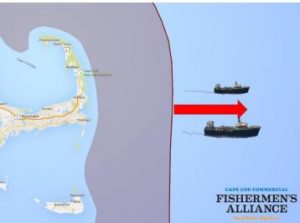
Cape and Islands Lawmakers Join Fight to Protect Offshore Herring
The Cape Cod Commercial Fishermen’s Alliance is receiving support from the Cape and Islands legislative delegation in protecting offshore herring for local fishermen. Earlier this month, the lawmakers called on the New England Fishery Management Council to create a buffer zone off the coast of the Cape and Islands from large-scale mid-water herring trawlers. Current regualtions allow the trawlers to fish three miles offshore from Provincetown past the Islands. click here to read the story 13:34
Cape Groups say Stop wiping out herring close to shore
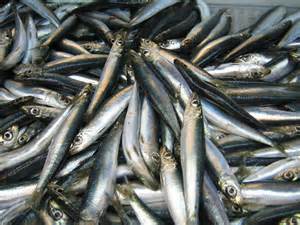 Herring loom large in the history of Cape Cod — it’s no coincidence that pretty much all of our towns have a “Herring River,” nor that one of the first public positions created in Colonial days was “herring warden,” charged with overseeing one of the community’s most important economic resources… In an effort to preserve the species, we have stopped people from scooping up so much as a single herring from our runs. Yet millions of river herring are killed just offshore and denied the chance to reproduce. It makes no sense.This is only one reason the Association to Preserve Cape Cod and the Cape Cod Commercial Fishermen’s Alliance have come together to call on federal regulators to create a buffer zone around the Cape to stop midwater herring trawling in our waters. click here to read the story 21:59:
Herring loom large in the history of Cape Cod — it’s no coincidence that pretty much all of our towns have a “Herring River,” nor that one of the first public positions created in Colonial days was “herring warden,” charged with overseeing one of the community’s most important economic resources… In an effort to preserve the species, we have stopped people from scooping up so much as a single herring from our runs. Yet millions of river herring are killed just offshore and denied the chance to reproduce. It makes no sense.This is only one reason the Association to Preserve Cape Cod and the Cape Cod Commercial Fishermen’s Alliance have come together to call on federal regulators to create a buffer zone around the Cape to stop midwater herring trawling in our waters. click here to read the story 21:59:
Hickman’s Harbour fishers relieved DFO ditched new rule for herring fishery
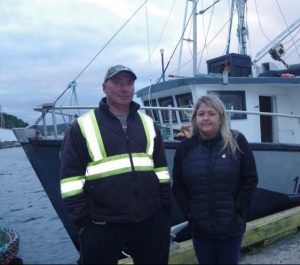 Melanie Marsh just wanted a simple answer. How many people are considered “sufficient number of crew members” for a herring-fishing boat? It was a question that officials of the Department of Fisheries and Oceans (DFO) in Clarenville were unable to answer. Marsh was prompted to ask the question after she read the conditions attached to her partner Richard Marsh’s herring licence, and realized a new rule had been added since the spring herring fishery. And that new rule, in her mind, did not make sense. click here to read the story 13:32
Melanie Marsh just wanted a simple answer. How many people are considered “sufficient number of crew members” for a herring-fishing boat? It was a question that officials of the Department of Fisheries and Oceans (DFO) in Clarenville were unable to answer. Marsh was prompted to ask the question after she read the conditions attached to her partner Richard Marsh’s herring licence, and realized a new rule had been added since the spring herring fishery. And that new rule, in her mind, did not make sense. click here to read the story 13:32

Togiak Sac Roe Herring: Catch the Story Before it’s Gone
My own visual memories of Togiak are not much more than a slate of wide, open grey sky that merged into open grey water. In the early 2000s, I flew out from Homer with a spotter pilot, landed on the beach in the community and then probably took a skiff from the beach to go out to meet my dad’s boat, F/V Agave. At the time, I was certainly not taking notes or paying attention to location details but what I do remember is bleak, grey, bland, flat land. The landscape was nothing like the mountains in south central and south east Alaska, I just recall bleakness. I never had the opportunity to explore the magic features of seeking out glass floats washed from across the Pacific, looking for ivory, exploring the shorelines. I went out to simply fish and retrieve my own juvenile income, not to recall anything else. That was not enough to provide a credible nostalgia of what it was like to fish out there in the peak of the alluring, crazy, chaotic competition combined with a visual recollection of stoic, stark, rural Alaska. By Emilie Springer click here to read the story 14:25
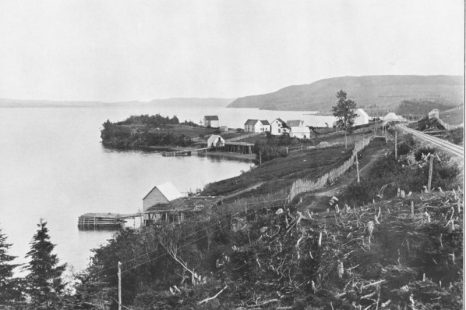
Paul Sparkes: To wit — a barrel of herring
In the middle of November 1906 at 10:30 in the morning Alexander Dubois and George Crane were summoned before Magistrate Levi March at Bay of Islands to answer to the charge of breaching Newfoundland’s Bait Act. As Commissioner in that region, Joseph O’Reilly, J.P., was the plaintiff — the man who advanced Newfoundland’s case. The defendants had lawyers but witnesses clearly told the magistrate that they had seen the two Wood’s Island men placing herring (a bait fish) aboard the American schooner Ralph L. Hall. And, woe to them for it seems to have been well known by witnesses that the two did not hold vendors’ licences. And that was essential under Newfoundland law at the time. Mind you, we are talking about three tubs of herring. click here to read the story 12:38

This year, a welcome switch on bait supply for Maine lobstermen
Bait freezers along the coast are full of herring and pogies, and even alewives, which means that bait is not only available, it is also much less expensive than last year when herring cost as much as 60 cents a pound, said Pat Keliher, commissioner of the state Department of Marine Resources. This year the lobstermen’s go-to bait costs about half as much. That’s still not a great price, Keliher said. Herring fetched about 18 cents a pound at the start of the 2015 lobstering season. “I won’t say we’re in great shape, but we are in a heck of a lot better shape than we were last year,” Keliher said. He attributed the strong start to basic supply-and-demand economics. click here to read the story 08:18
Middleboro-Lakeville Herring Fishery Commission considers reopening local herring runs to fishing
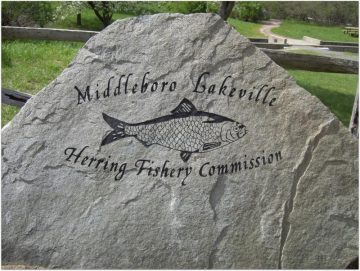 MIDDLEBORO — Each spring for countless centuries, hundreds of thousands of herring have made an arduous journey from Mount Hope Bay, upstream along the Taunton and Nemasket Rivers, to reach their traditional spawning grounds in the Assawompsett Ponds Complex in Lakeville. For thousands of years, too, people living in these parts depended on the abundant alewife fishery as an important source of food and income.,, These days, a joint Middleboro-Lakeville Herring Fishery Commission supervises the local herring runs, closed to fishing since 2006, when a sharp decline in herring populations prompted a statewide ban on fishing. Now that the fishery has rebounded to respectable numbers, the two towns are considering re-opening the local herring runs, possibly as early as the 2018 spring migration. The move would help revive a tradition that has been ongoing – and well regulated – since the 1700s. click here to read the story 18:01
MIDDLEBORO — Each spring for countless centuries, hundreds of thousands of herring have made an arduous journey from Mount Hope Bay, upstream along the Taunton and Nemasket Rivers, to reach their traditional spawning grounds in the Assawompsett Ponds Complex in Lakeville. For thousands of years, too, people living in these parts depended on the abundant alewife fishery as an important source of food and income.,, These days, a joint Middleboro-Lakeville Herring Fishery Commission supervises the local herring runs, closed to fishing since 2006, when a sharp decline in herring populations prompted a statewide ban on fishing. Now that the fishery has rebounded to respectable numbers, the two towns are considering re-opening the local herring runs, possibly as early as the 2018 spring migration. The move would help revive a tradition that has been ongoing – and well regulated – since the 1700s. click here to read the story 18:01

Plenty to go around from this year’s Strait of Georgia herring spawn
It was another strong year for the local herring roe harvest — in line with a growing abundance of herring over the last decade that has led to “historic highs,” said the executive director of the Herring Conservation and Research Society, Greg Thomas. The Nanoose Bay resident said the prediction for this year was 150,000 total tons of herring in the Strait of Georgia. The numbers are provided by Fisheries and Oceans Canada, which assesses the strength of each year’s spawn, and sets the quotas for the following year. The quotas tend to be about 20 per cent of the total, said Thomas. While some reports have said the herring quotas in the Qualicum Beach to Nanoose Bay area were caught quite quickly, Thomas said that, overall, “(Fishing companies) didn’t achieve their total allowable catch, however they did catch a substantial amount of fish.” click here to continue reading the story 08:47

Photo of the Day: Splitting the Catch
Whales in some parts of the world have learned to follow the noise and activity of fishing boats in order to catch any herring near them. When the boats’ nets begin to close, the whales recognize what’s happening and take the opportunity to cut off any herring escaping the nets as they close. It’s sometimes a beneficial relationship for both the whales and the people fishing. Fishermen often locate killer whales and humpbacks to find the schools of herring that reside near them: Photographer Audun Rikardsen captured this photograph in the Arctic water off of Norway. His equipment includes the Canon EOS 5D Mark III with a 11-24mm f/4 lens at 11mm, 1/200 of a second, f/6.3, ISO 640. Read the rest here 21:29
Herring stock falling to critical level say scientists at Fisheries and Oceans Canada
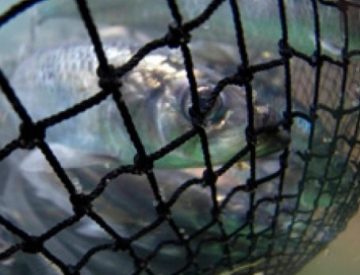 Even if there was a two-year hiatus in the spring herring fishery in the Gulf of St Lawrence, there would still be a 90 per cent chance the fish stocks would remain at critical levels, say scientists at Fisheries and Oceans Canada. Herring stocks have been dwindling for two decades. Despite the advice of its own scientists, Fisheries and Oceans Canada still allowed 2,000 tonnes of spring herring to be caught in 2016, and will allow the same this year. Federal herring biologist Jenni McDermid said there is a risk of pushing these fish beyond the recovery point. Read the story here 11:33
Even if there was a two-year hiatus in the spring herring fishery in the Gulf of St Lawrence, there would still be a 90 per cent chance the fish stocks would remain at critical levels, say scientists at Fisheries and Oceans Canada. Herring stocks have been dwindling for two decades. Despite the advice of its own scientists, Fisheries and Oceans Canada still allowed 2,000 tonnes of spring herring to be caught in 2016, and will allow the same this year. Federal herring biologist Jenni McDermid said there is a risk of pushing these fish beyond the recovery point. Read the story here 11:33
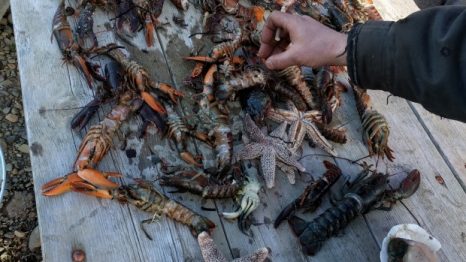
Scientists test water to narrow down what’s killing herring, sea creatures at St. Marys Bay
Federal scientists are testing water samples and scanning images of the bottom of St. Marys Bay, hoping to determine what caused thousands of herring and sea creatures to wash ashore near Digby, N.S. Staff aboard a vessel gathered samples Thursday and used an underwater camera to film and photograph the ocean floor. Kent Smedbol, manager of population ecology for the Department of Fisheries and Oceans (DFO) in the Maritimes, said the data will be examined to try to figure out whether an environmental factor caused the fish to die. “It could be an intrusion of very cold water very rapidly, it could be related to a rapid change in salinity with the storms that have gone through … due to the sudden influx of fresh water, rain or runoff from the land,” he said. “Depending on what we find, then hopefully that will allow us to discount a number of possibilities and focus our efforts on some possible explanations.” Read the story here 08:55
Dead lobsters, crabs and herring are washing up along this Nova Scotia shore, and we don’t know why!
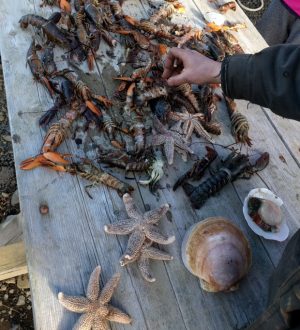 Halifax resident Eric Hewey was home in Digby, N.S., visiting for the holidays when he got a call from friends on Boxing Day summoning him to the beach below Savary Park in nearby Plympton. “They said we’ve got to come down and look at the beach.” On Tuesday Hewey described when he found when he arrived at the beach as sad: lots of dead herring — an ongoing and as yet unexplained problem — but also dead starfish, lobsters, bar clams, scallops and crabs. Ted Leighton is a retired veterinary pathologist who has been tracking the dead herring reports. He hadn’t been to the beach to see the most recent findings, but he’s seen Hewey’s pictures and noted it’s a place dead herring have been found before. More photos, read the rest here 13:09
Halifax resident Eric Hewey was home in Digby, N.S., visiting for the holidays when he got a call from friends on Boxing Day summoning him to the beach below Savary Park in nearby Plympton. “They said we’ve got to come down and look at the beach.” On Tuesday Hewey described when he found when he arrived at the beach as sad: lots of dead herring — an ongoing and as yet unexplained problem — but also dead starfish, lobsters, bar clams, scallops and crabs. Ted Leighton is a retired veterinary pathologist who has been tracking the dead herring reports. He hadn’t been to the beach to see the most recent findings, but he’s seen Hewey’s pictures and noted it’s a place dead herring have been found before. More photos, read the rest here 13:09
Concerns linger over Lake Superior’s historic herring fishery
 Minnesota fisheries managers are concerned about the long term health of the lake herring fishery in Lake Superior. Biologists worry not enough young herring are surviving to sustain the fishery, while at the same time demand for the fish has spiked. Minnesota’s 25 or so commercial fishermen who ply the waters off the North Shore have caught a lot fewer cisco in recent years. The herring, or cisco, fishery is always unpredictable, said Steve Dahl, a commercial fisherman who works out of the Knife River marina on the North Shore of Lake Superior. The last few falls have been tough for Dahl, whose nets have yielded fewer herring at a crucial time of year. This year was different, though. “November was really good, one of the better ones I’ve had,” he said. “Towards the end I sort of got overwhelmed, it was just too much.” Read the story here 11:21
Minnesota fisheries managers are concerned about the long term health of the lake herring fishery in Lake Superior. Biologists worry not enough young herring are surviving to sustain the fishery, while at the same time demand for the fish has spiked. Minnesota’s 25 or so commercial fishermen who ply the waters off the North Shore have caught a lot fewer cisco in recent years. The herring, or cisco, fishery is always unpredictable, said Steve Dahl, a commercial fisherman who works out of the Knife River marina on the North Shore of Lake Superior. The last few falls have been tough for Dahl, whose nets have yielded fewer herring at a crucial time of year. This year was different, though. “November was really good, one of the better ones I’ve had,” he said. “Towards the end I sort of got overwhelmed, it was just too much.” Read the story here 11:21
A mysterious phenomenon – Schools of dead herring continue to wash up on Nova Scotia beaches
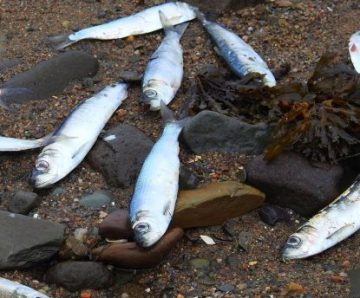 Schools of dead herring keep washing ashore along the rocky beaches of western Nova Scotia, prompting a retired scientist to enlist the help of local naturalists and bird watchers as he continues to gather data about the mysterious phenomenon. Ted Leighton, an adjunct biology professor at Nova Scotia’s University of Sainte-Anne, said Friday he has compiled more than 40 sightings since tens of thousands of dead and dying fish started appearing in St. Marys Bay in late November. The event does not appear to be over,” he said in an interview. “Whether it’s diminishing or not is really hard to say.” On Wednesday, federal scientists said they had yet to determine what is causing the die-off, despite a battery of tests. Negative results have been reported for physical damage and several types of bacterial infections and viruses. Fisheries and Oceans Canada says more tests are expected, including a check by the Canadian Food Inspection Agency for toxins caused by algae, and the possible presence of domoic acid — a toxin sometimes found in shellfish. Read the rest of the story here 16:53
Schools of dead herring keep washing ashore along the rocky beaches of western Nova Scotia, prompting a retired scientist to enlist the help of local naturalists and bird watchers as he continues to gather data about the mysterious phenomenon. Ted Leighton, an adjunct biology professor at Nova Scotia’s University of Sainte-Anne, said Friday he has compiled more than 40 sightings since tens of thousands of dead and dying fish started appearing in St. Marys Bay in late November. The event does not appear to be over,” he said in an interview. “Whether it’s diminishing or not is really hard to say.” On Wednesday, federal scientists said they had yet to determine what is causing the die-off, despite a battery of tests. Negative results have been reported for physical damage and several types of bacterial infections and viruses. Fisheries and Oceans Canada says more tests are expected, including a check by the Canadian Food Inspection Agency for toxins caused by algae, and the possible presence of domoic acid — a toxin sometimes found in shellfish. Read the rest of the story here 16:53
Herring trawlers just offshore anger Cape fishermen
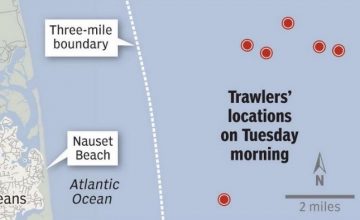 They were visible from shore for most of Tuesday, seven vessels of between 140 to 170 feet in length, four miles off Nauset Beach. Some worked in tandem, towing a huge net between them, scooping up mackerel or herring right on the Cape’s doorstep and making local fishermen like Bruce Peters angry. “They suck up all the herring and mackerel, the forage fish we need for the cod, tuna, stripers, the whales, what we need for the food chain,” said Peters, a longtime commercial cod and groundfish fisherman, who now runs a charter boat business and fishes commercially for tuna. “We need a 50-mile buffer zone to keep these guys offshore.” Read the story here 08:59
They were visible from shore for most of Tuesday, seven vessels of between 140 to 170 feet in length, four miles off Nauset Beach. Some worked in tandem, towing a huge net between them, scooping up mackerel or herring right on the Cape’s doorstep and making local fishermen like Bruce Peters angry. “They suck up all the herring and mackerel, the forage fish we need for the cod, tuna, stripers, the whales, what we need for the food chain,” said Peters, a longtime commercial cod and groundfish fisherman, who now runs a charter boat business and fishes commercially for tuna. “We need a 50-mile buffer zone to keep these guys offshore.” Read the story here 08:59
Bait crisis is over, but Maine lobstermen are still feeling the pinch
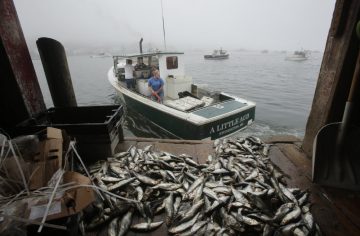 The lobster bait crisis that plagued New England this summer is finally over, now that fishermen have begun to catch herring off Georges Bank. But the price of lobstermen’s favorite bait fish, which rose dramatically when the offshore fleet wasn’t landing enough herring to refill empty bait freezers, has remained high through the end of peak lobster season, typically August through late October. Although there’s been no appreciable effect on consumer prices, lobstermen agree the shortage hurt their bottom line. “There is always a risk of something like this in a wild-caught fishery,” Patrice McCarron said. “You can’t create supply. Herring just wasn’t available, and no manager can fix that. I think the managers did the best they could to stretch the inshore bait out as long as they did, but there’s no doubt, it cost us more than ever to bait our traps this year.” Read the story here 09:33
The lobster bait crisis that plagued New England this summer is finally over, now that fishermen have begun to catch herring off Georges Bank. But the price of lobstermen’s favorite bait fish, which rose dramatically when the offshore fleet wasn’t landing enough herring to refill empty bait freezers, has remained high through the end of peak lobster season, typically August through late October. Although there’s been no appreciable effect on consumer prices, lobstermen agree the shortage hurt their bottom line. “There is always a risk of something like this in a wild-caught fishery,” Patrice McCarron said. “You can’t create supply. Herring just wasn’t available, and no manager can fix that. I think the managers did the best they could to stretch the inshore bait out as long as they did, but there’s no doubt, it cost us more than ever to bait our traps this year.” Read the story here 09:33
Maine: The Situation with bait Herring
 On a local radio station recently a commentator stated that herring stocks are overfished. Overfishing has led to the current shortage of herring for lobstermen’s use as bait, he continued. His statement was incorrect. Among the many fish species that call the Gulf of Maine home, Atlantic herring are one species that is doing quite well, thank you very much. In the opaque language of fisheries regulators, “Atlantic herring stocks are not overfished and overfishing is not occurring.” So why has herring availability become such an issue for lobstermen this summer? The migratory fish is the preferred bait for many Maine lobstermen and when there’s no herring available, lobstermen get a little testy. The problem lies not with the fish, who right now are congregating in spawning schools along the coast. The problem lies with the regulatory need to control what happens at sea, a desire that often conflicts with what is actually happening at sea. Read the story here 14:18
On a local radio station recently a commentator stated that herring stocks are overfished. Overfishing has led to the current shortage of herring for lobstermen’s use as bait, he continued. His statement was incorrect. Among the many fish species that call the Gulf of Maine home, Atlantic herring are one species that is doing quite well, thank you very much. In the opaque language of fisheries regulators, “Atlantic herring stocks are not overfished and overfishing is not occurring.” So why has herring availability become such an issue for lobstermen this summer? The migratory fish is the preferred bait for many Maine lobstermen and when there’s no herring available, lobstermen get a little testy. The problem lies not with the fish, who right now are congregating in spawning schools along the coast. The problem lies with the regulatory need to control what happens at sea, a desire that often conflicts with what is actually happening at sea. Read the story here 14:18
Where are the herring? Unalaska’s seine fishery remains on hold
 The commercial herring fishery is on hold in Unalaska — because no one can find the fish. The herring season opened more than a week ago. So far, fishermen haven’t had any luck, even with a spotter pilot searching from above. “There’s been no appreciable harvest at all,” said Frank Kelty on the Unalaska Fisheries Report. “The fish appear to be well offshore and in very deep water where the seiners can’t get to them.” Kelty said three or four seiners are registered to fish this season, while no one has registered to use gillnet gear. If the herring show up, Dutch Harbor fishermen will be able to harvest 2,166 tons. But until then, the seiners are on standby. Read the rest here Listen to the report here 08:01
The commercial herring fishery is on hold in Unalaska — because no one can find the fish. The herring season opened more than a week ago. So far, fishermen haven’t had any luck, even with a spotter pilot searching from above. “There’s been no appreciable harvest at all,” said Frank Kelty on the Unalaska Fisheries Report. “The fish appear to be well offshore and in very deep water where the seiners can’t get to them.” Kelty said three or four seiners are registered to fish this season, while no one has registered to use gillnet gear. If the herring show up, Dutch Harbor fishermen will be able to harvest 2,166 tons. But until then, the seiners are on standby. Read the rest here Listen to the report here 08:01






